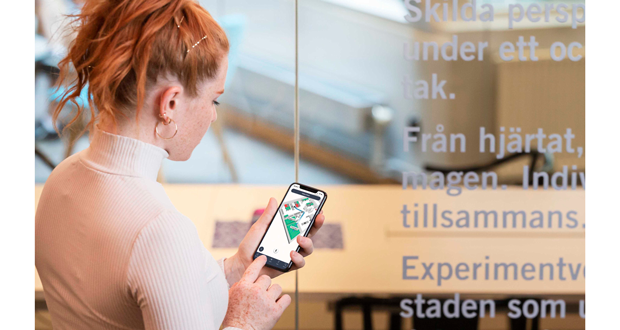Two questions on both employees and employers’ minds right now are, how and when will we get back to the office. “When” might be more difficult to answer, but companies in Sweden have now started to discuss the “how”. Flowscape, one of the leading smart office companies in Scandinavia, have interviewed nine respondents in Sweden, who are all in some way responsible for the management or design of offices.
Is working from home the future?
When Flowscape started speaking to their Swedish customers in May 2020, none of them had set a date for the return of their employees to their offices, as that decision depended on the status of the pandemic and the Swedish Public Health Agency recommendations. They all said that they will continue to monitor the situation during the year to come.
Employees will probably want to work
from home a few days every week
Now in 2022, all respondents said that working from home had worked better than expected during the pandemic, with employees demonstrating they could work more efficiently and still have more free time due to less commuting, making for an improved work/life balance. But most employees missed the social element of being in the office. One customer highlighted that work is not only a place where tasks are conducted, but also where interaction with colleagues makes employees feel part of a team and more ‘included’. All agreed that within a noticeably brief period, the attitude towards remote working has changed, and they expect that in the future, employees will want to work at home two to three days per week.
However, not everyone has the resources to work from home comfortably. One of the respondents carried out an employee survey where 36% of respondents had their own study for work, 21% had a dedicated area which was not a room, while 42% worked from their dining room table or similar.
If remote work is the future, it raises questions about how companies can develop workplace culture digitally, how more creative parts of the work process can function online, and how new employees will develop relationships with their colleagues.
If the future brings more remote working, it will mean that the occupancy of desks will decrease, leaving parts of the office under-utilised. Three companies were thinking about reducing their office space immediately. One said that they might decrease their office size to one third their present size, and they could envisage the same trend among their own clients. But the focus seems to be more on optimising than just reducing office space. One customer had already invested in office sensors to obtain data on how their office space is being used to ensure they make the right decisions based on real-time utilisation. Some respondents also expected more time focused on shorter term-office leases and the use of the flexible workspace sector
How to work collaboratively and successfully in remote-based team was also top of the customers’ minds. One respondent remarked that it is fine working at home on a project that is already in progress, but commencing a new project is far more difficult to do remotely. They suggested that creative areas or zones in the office could be an answer. While the acceptance of home working has grown substantially, the workplace will still play an important role regarding employees’ team working and that was supported by the survey’s findings.
The importance of the contactless office
All respondents plan to increase their office cleaning and sanitisation to focus on controlling further spread of the virus and also helping to instil employee confidence. This might involve more cleaning shifts, longer gaps between meetings and more thorough sanitation of items, such coffee and vending machines, printers, and office telephones.
One respondent recommended removing shared touch screens and panels, which could be replaced with contactless technologies using mobile apps. Some companies are issuing every employee their own keyboard and mouse, so there is no need to share PC peripherals. Access to the office for both visitors and staff alike is moving to contactless through the use of QR codes and apps. This whole area of reducing the contact needed to enter and move around the building seemed to be a key focus for the enterprise for the next 12 months.
But above all, FMs and Office Managers wanted access to office usage data to manage the new office challenges, to make informed decisions on building an effective workspace, and to instil a sense of confidence in all employees that their company considers their welfare as paramount.
Read more on Flowscape´s Website
Flowscape’s Solutions:
-ends-
To have your industry news published in the pages of FMJ’s news section, Month in FM, and here online on fmj.co.uk, please send your news and image to Danny Grange danny.grange@kpmmedia.co.uk
The view or information contained within these unedited press releases, are that of the company producing it and not necessary the views of kpm.






